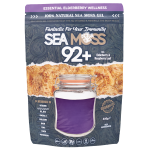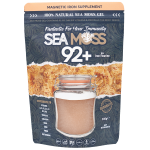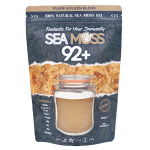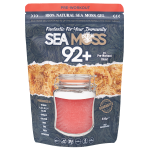INFECTIONS
INFECTIONS

Infections are a wide range of disorders caused by viruses, bacteria, fungi, or parasites. They can be transmitted through direct or indirect contact, including person-to-person, animal-to-person, or contaminated objects and food.
Symptoms vary depending on the type of infection but may include fever, muscle pain, diarrhoea, cough, and skin rash. Infections can be classified based on their mode of transmission or the responsible microorganism.
Treatment options include antibiotics for bacterial infections and specific medications for viral or fungal infections. Natural remedies like consuming citrus fruits, herbal teas rich in vitamin C, and certain herbs like garlic and ginger can provide support. Vitamins C and zinc play a beneficial role in combating infections.
Awareness and proper management of infections are crucial in preventing the spread of diseases such as strep throat, HIV, athlete’s foot, and malaria.
Description
Infections occur when harmful microorganisms invade and multiply in the body, resulting in various symptoms and complications. They can affect different body parts, such as the respiratory tract, urinary tract, skin, or gastrointestinal system.
Symptoms may include fever, pain, inflammation, fatigue, coughing, sneezing, diarrhoea, or skin rashes. Infections can spread through direct contact, airborne particles, contaminated food or water, insect bites, or surfaces.
Treatment involves targeted medications, such as antibiotics or antivirals, along with supportive care. Prevention includes practising good hygiene, maintaining a healthy lifestyle, and getting vaccinated.
Prompt prevention, detection, and treatment are essential for managing infections and promoting overall well-being.
Symptoms of infections can vary widely depending on the type of infection and the part of the body it affects. Some infections can be asymptomatic, meaning they do not cause noticeable symptoms in some individuals and the severity and duration of symptoms can vary widely. Here are some common symptoms associated with various types of infections:
- Respiratory Infections (e.g., common cold, flu, pneumonia):
Cough
Congestion or runny nose
Sneezing
Sore throat
Fever
Shortness of breath
Chest discomfort
- Gastrointestinal Infections (e.g., gastroenteritis, food poisoning):
Diarrhoea
Nausea and vomiting
Abdominal cramps
Loss of appetite
Dehydration
- Urinary Tract Infections (e.g., UTI, cystitis):
Frequent urination
Pain or burning during urination
Cloudy or bloody urine
Lower abdominal pain
Urgency to urinate
- Skin Infections (e.g., cellulitis, impetigo):
Redness, swelling, and warmth at the site of infection
Pain or tenderness
Pus-filled blisters or sores
Itching
- Sexually Transmitted Infections (STIs) (e.g., chlamydia, gonorrhoea, syphilis):
Painful urination
Unusual genital discharge
Genital sores or ulcers
Itching or burning in the genital area
Lower abdominal pain
- Systemic Infections (e.g., sepsis, systemic fungal infections):
High fever
Chills
Rapid heart rate
Confusion or altered mental state
Low blood pressure
- Viral Infections (e.g., COVID-19, HIV):
Fatigue
Muscle aches
Loss of taste or smell (anosmia)
Skin rashes (in some cases)
- Parasitic Infections (e.g., malaria, giardiasis):
Fever and chills (in the case of malaria)
Diarrhoea
Abdominal pain and cramping
- Bacterial Infections (e.g., tuberculosis, strep throat):
Specific symptoms related to the affected organ or system
Fever and general malaise
There are a variety of infections such as:
- Bacterial Infections: Bacteria are single-celled microorganisms that can cause a wide range of infections, such as urinary tract infections, strep throat, bacterial pneumonia, and skin infections like cellulitis.
- Viral Infections: Viruses are smaller than bacteria and need host cells to replicate. Common viral infections include the common cold, influenza (flu), COVID-19, viral gastroenteritis, and viral hepatitis.
- Fungal Infections: Fungi are organisms like yeasts and moulds that can cause infections, especially in moist and warm areas of the body. Examples include athlete's foot, ringworm, candidiasis (yeast infection), and fungal nail infections.
- Parasitic Infections: Parasites are organisms that live in or on another organism and obtain nutrients from their host. Examples of parasitic infections include malaria, giardiasis, trichomoniasis, and head lice infestations.
- Protozoal Infections: Protozoa are single-celled microscopic organisms that can cause infections such as amebiasis, toxoplasmosis, and malaria.
- Helminth Infections: Helminths are worms that can infect the human body. Examples of helminth infections include intestinal worms (e.g., roundworms, hookworms) and schistosomiasis.
- Viral Hepatitis: Hepatitis viruses (A, B, C, D, and E) can cause inflammation of the liver, leading to hepatitis.
- Sexually Transmitted Infections (STIs): STIs are infections spread through sexual contact. Examples include chlamydia, gonorrhoea, syphilis, human papillomavirus (HPV), and human immunodeficiency virus (HIV).
- Respiratory Infections: Respiratory infections affect the respiratory system and can include conditions like bronchitis, pneumonia, and tuberculosis.
- Gastrointestinal Infections: Gastrointestinal infections involve the digestive tract and can cause conditions like gastroenteritis (stomach flu) and food poisoning.
- Skin Infections: Skin infections can be caused by bacteria, viruses, or fungi and may lead to conditions like cellulitis, impetigo, or herpes simplex.
- Central Nervous System Infections: Infections of the central nervous system can include meningitis and encephalitis.
Infections can be transmitted through various modes, and these modes of transmission are important considerations in public health and infection control. Here's a bit more detail on each of the categories:
Direct Contact:
- Person-to-Person: Infections can spread from one person to another through direct physical contact, such as shaking hands, hugging, kissing, or through contact with bodily fluids (e.g., saliva, blood, respiratory secretions). Common examples include the flu, colds, and sexually transmitted infections (STIs).
- Zoonotic Infections: Some infections can be transmitted from animals to humans. This can occur through direct contact with infected animals or their bodily fluids, handling animal waste, or through vectors like insect bites. Examples include rabies, Lyme disease, and some strains of influenza.
- Vertical Transmission: Infections can be transmitted from a mother to her unborn child during pregnancy, childbirth, or through breastfeeding. Examples include HIV, syphilis, and rubella.
Indirect Contact:
- Contaminated Objects: Germs can survive on surfaces and objects for varying lengths of time. When a person touches a contaminated surface and then touches their face, mouth, or eyes, they can introduce the pathogens into their body. Proper hand hygiene is crucial to prevent this mode of transmission.
- Foodborne Infections: Contaminated food or water can be a source of infections. Bacteria, viruses, and parasites can contaminate food during production, handling, or preparation. Proper food safety practices, including thorough cooking and safe food storage, are essential to prevent foodborne illnesses.
- Waterborne Infections: Drinking or coming into contact with water contaminated with pathogens can lead to various waterborne diseases, including cholera, dysentery, and giardiasis. Safe drinking water and sanitation measures are vital in preventing such infections.
Common medical treatments for various types of infections:
- Antibiotics: Antibiotics are drugs used to treat bacterial infections. They work by either killing bacteria or inhibiting their growth. Common examples include penicillin, amoxicillin, and ciprofloxacin.
- Antivirals: Antiviral medications are used to treat viral infections. They can help slow down the replication of viruses or reduce their symptoms. Examples include oseltamivir (Tamiflu) for influenza and acyclovir for herpes.
- Antifungals: Antifungal drugs are used to treat fungal infections, such as yeast infections and fungal skin infections. They work by targeting the fungal cells' unique structures and functions. Common antifungal medications include fluconazole and terbinafine.
- Antiparasitic: Antiparasitic drugs are used to treat parasitic infections, including malaria, intestinal parasites, and lice. Examples include chloroquine for malaria and ivermectin for certain parasitic worms.
- Antipyretics: Antipyretic medications, such as acetaminophen (Tylenol) and ibuprofen (Advil, Motrin), are used to reduce fever and relieve associated discomfort in various infections.
- Vaccinations: Vaccinations are preventive measures that help the body develop immunity to specific infections. Vaccines stimulate the immune system to produce antibodies, protecting against future infections. Examples include vaccines for influenza, measles, and hepatitis.
- Intravenous (IV) Fluids: In some cases, particularly when infections cause severe dehydration or involve high fever, IV fluids may be administered to maintain hydration and electrolyte balance.
- Antiretroviral Therapy (ART): Antiretroviral drugs are used to manage HIV (human immunodeficiency virus) infections. These drugs can suppress viral replication and slow down the progression of HIV to acquired immunodeficiency syndrome (AIDS).
Natural treatments for infections can be supportive measures to help the body's immune system combat the infection. Here's more information on the natural treatment options:
- Herbal Teas: Some herbal teas, such as chamomile, ginger, and echinacea, are known for their potential immune-boosting and anti-inflammatory properties. They can provide comfort and hydration when dealing with infections.
- Keep Wounds Clean and Dry: For skin infections or wounds, proper wound care is crucial. Cleaning the affected area with mild antiseptic solutions and keeping it dry can help prevent further infection and promote healing.
- Drink Plenty of Water: Staying well-hydrated is important during infections, as it helps flush toxins from the body and supports overall health. Water can also help alleviate symptoms like fever and dehydration.
- Rest: Adequate rest is essential for the body to recover from infections. Rest allows the immune system to work more efficiently in fighting off pathogens.
- Nutritious Diet: Eating a balanced diet rich in vitamins, minerals, and antioxidants can support the immune system. Foods like fruits, vegetables, lean proteins, and whole grains can provide essential nutrients needed for recovery.
- Reduce Stress: Chronic stress can weaken the immune system. Practising stress-reduction techniques such as meditation, deep breathing, and yoga may help the body better combat infections.
- Essential Oils: Some essential oils, such as tea tree oil and lavender oil, have antimicrobial and anti-inflammatory properties. They can be used topically or aromatically but should be used with caution and diluted properly.






